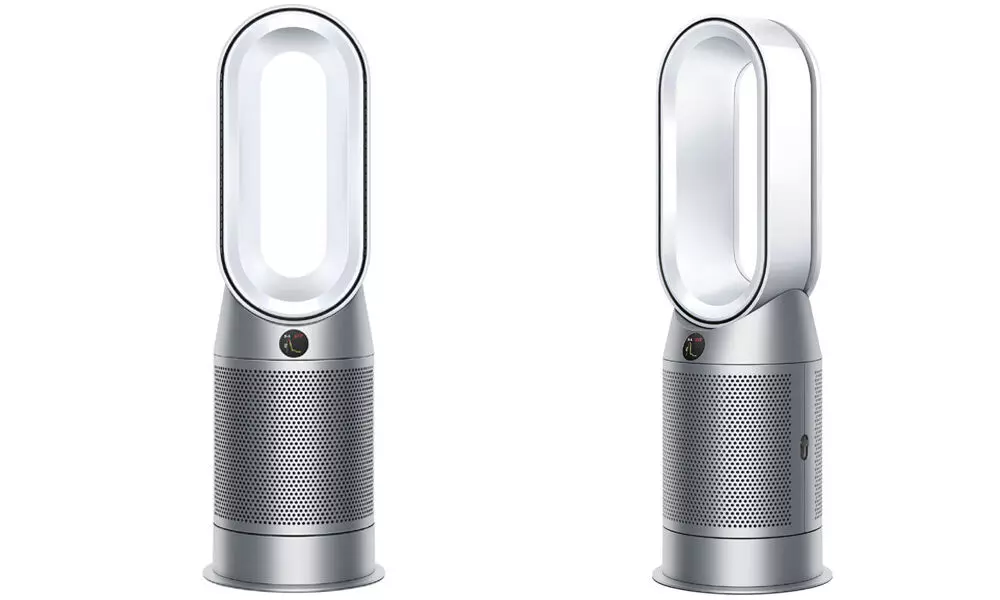Live
- Punjab DGP, MHA official request farmer leader Dallewal to end 20-day fast
- Govt unveils ‘Jalvahak’ to boost inland waterways
- List of criminals: Delhi BJP chief on AAP panel of 38 candidates
- PSBs in India clock record Rs 1.41 lakh crore in net profit in FY24
- Telangana Government Announces Key Development Plans: Bhatti Vikramarka
- Crackdown on illegal poppy farming in Manipur: Assam Rifles destroyed 6,228 acres in 5 years
- South Korea's ruling party leader cancels press conference amid calls for resignation
- AIADMK's big meet discusses 2026 polls, prospective alliances
- BJP questions Congress-Shiv Sena (UBT) alliance over Aaditya Thackeray's Savarkar-Nehru remark
- Maha Oppn to boycott customary CM tea meet, cites rising farmers' distress, atrocities against Dalits
Just In
Tips to Maintain a Healthy Environment at Home


Air purification: Need of the hour | From Dyson India
In India, the awareness about the menace and hazards arising out of indoor pollution is hardly proportionate to what one is being exposed to for the most part of the day. Dyson Engineer Sam Taylor has the following tips to keep your home free of pollution.
As the modern lifestyle continues to evolve; a phenomenon that has been further accelerated during the pandemic is that of 'staying at home.' The fact that so many of daily our tasks today can be performed efficiently without stepping out of our homes has given rise to the 'indoor generation', that is now spending almost 90% of their time in an indoor space.
Hence, what is surprising, especially in India, is that the awareness about the menace and hazards arising out of indoor pollution is hardly proportionate to what one is being exposed to for the most part of the day.
The air in one's home can contain a variety of substances, from tiny elements and particles such as allergens, VOCs (Volatile organic compounds), NO 2, benzene and dust. These are a result of regular human behaviour and activities that we follow in our everyday life like cleaning homes using disinfects, using if incense sticks; cooking, especially deep frying, smoking etc; are major sources of airborne particles that contribute to pollutants in households. These pollutants are often not visible to the naked eye and can create an unhealthy indoor environment.
Dyson Engineer Sam Taylor has the following tips to keep your home free of pollution -
1. Use cleaning products wisely: Some of the VOCs found in our homes can come from the chemicals in cleaning products we use on kitchen surfaces, bathrooms and windows. Limonene is one such compound that gives cleaning products the fruity citrus smell, however, it can react with the naturally occurring air in our homes to create formaldehyde.
Therefore, using an alternate such as a natural cleaning product could help lower the Volatile organic compounds (VOCs) in the air indoors.
2. Vacuum regularly: A research conducted in Indian households and associate cars showed that bacteria, dust mites, cockroach and dog allergens are commonly found in spaces where we sit, play and sleep. The best way to keep your spaces such as upholstery, carpets, tabletops and floors free of pet hair and dust is by vacuuming regularly and effectively.
When you dust your sofa or play with a cushion, one might see a burst of dust in the air. This dust can stay in the air indoors and be breathed in, however, regular vacuuming is one of the easiest ways to reduce particulate pollution at home.
3. Scents in moderation: Some of the things we might enjoy at home, like scented candles, can also be sources of indoor air pollution. Rather than completely letting go of lighting candles, try them in moderation and preferably in the evening. Additionally, make sure to air out or ventilate your room afterwards to remove VOCs from the air.
4. Be careful when letting in "fresh air": If you reside close to a high traffic area or a busy road, opening the window can allow outdoor pollution, gases like NO2 and sulphur dioxide, into your home.
5. Cooking could add to indoor pollution: Be aware that when you are cooking at home, some cooking methods can create pollution. Frying with oil can create particulate pollution and using a gas stove can also create gaseous pollutants like NO 2 . When cooking, make sure to use suitable ventilation, or a purifier or open a window if the outdoor air pollution is suitable.

© 2024 Hyderabad Media House Limited/The Hans India. All rights reserved. Powered by hocalwire.com






